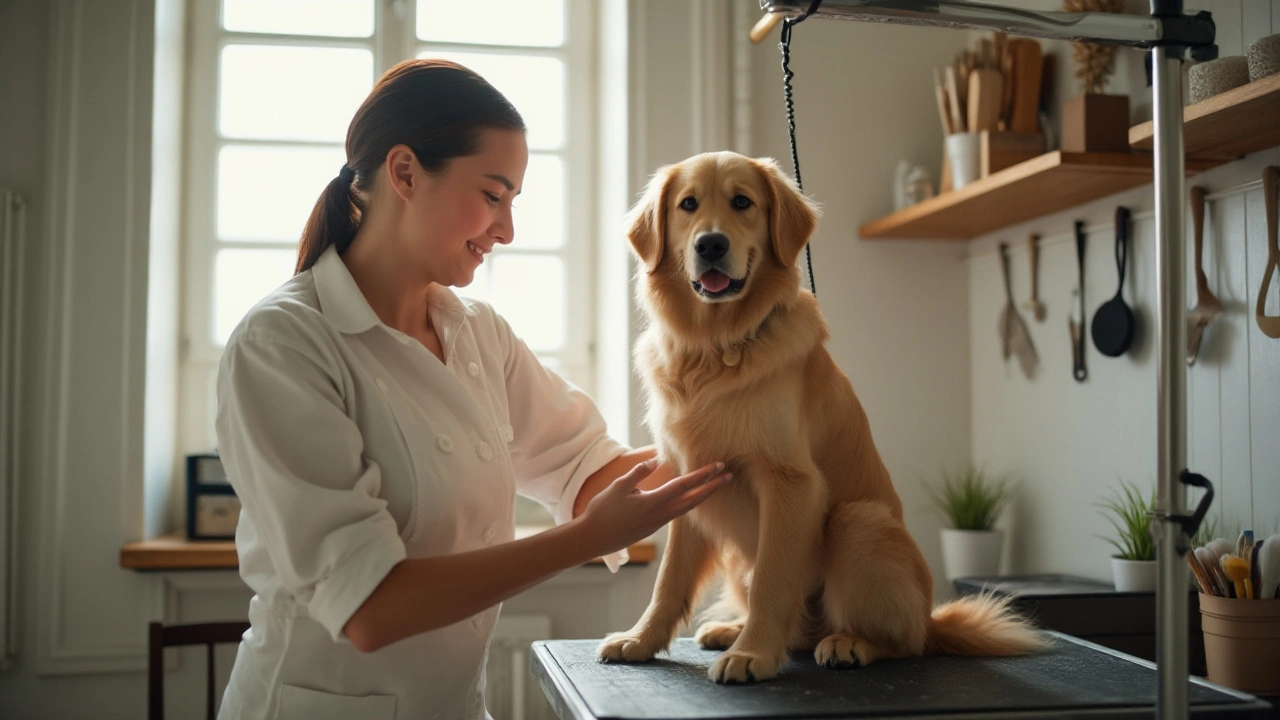Groomer Tips: Expert Advice for Safer, Faster Dog Grooming
If you’re a solo groomer or run a small shop, you’ve probably wondered how many dogs you can handle in a day without burning out. The answer isn’t a magic number – it’s a mix of timing, breed size, and your own stamina. Below you’ll find straight‑forward steps to plan your day, keep pups calm, and finish each grooming session on time.
Plan Your Grooming Day Efficiently
Start by mapping out a realistic schedule. Most groomers find 4‑8 full grooms work best, depending on coat length and behavior. Block out 45‑60 minutes per small breed, 90 minutes for a thick‑coated hound, and add 15 minutes for set‑up and clean‑up. Write the times on a board or use a simple spreadsheet – visual cues keep you honest.
Next, batch similar tasks. If you have three double‑coated retrievers, do all their baths first, then move to trimming. This reduces the number of tool changes and saves minutes that add up over the day. Keep a “quick‑swap” kit with brushes, clippers, and towels ready at each station.
Don’t forget breaks. A five‑minute pause after every two dogs helps you stay focused and prevents mistakes. Use that time to wipe down surfaces, rest your eyes, and stretch – a short reset keeps your energy up for the next pet.
Keep Dogs Calm and Comfortable
Stress is the biggest time‑waster in grooming. An anxious dog may try to bolt, shake, or even bite, forcing you to stop and calm them down. Before each appointment, ask owners about recent changes – new meds, a move, or a noisy home can spike anxiety.
Use a calm voice, slow movements, and a gentle touch when you first approach the dog. Offering a favorite toy or a treat during the first minute can create a positive association with the grooming table. If a dog shows signs of stress – ears back, tail tucked, heavy panting – pause, give a break, and try a calming tool like a low‑level pheromone spray.
Safety gear matters too. Slip‑resistant non‑slip mats on the table prevent sudden slides, and a simple harness keeps larger dogs from jumping off. Keep clippers and scissors sharp; dull tools tug and increase discomfort.
Finally, wrap up each session with a quick praise and a small reward. A happy ending reinforces good behavior, making the next visit easier for both you and the pup.
By following these groomer tips – realistic scheduling, task batching, regular breaks, and calm‑focused handling – you’ll boost productivity, reduce burnout, and give dogs a smoother grooming experience. Try one tip this week, add another next week, and watch how your workflow improves. Happy grooming!
The Art of Dog Restraint in Grooming: Techniques and Insights
Dog grooming requires more than just a brush and scissors; it involves techniques to safely and humanely restrain dogs to ensure both the dog's and the groomer's safety. This article explores the common methods groomers use to keep dogs still, the reasons behind each technique, and how they maintain a stress-free environment. Readers will gain insights into professional approaches and tips to try at home for a smooth grooming experience.
